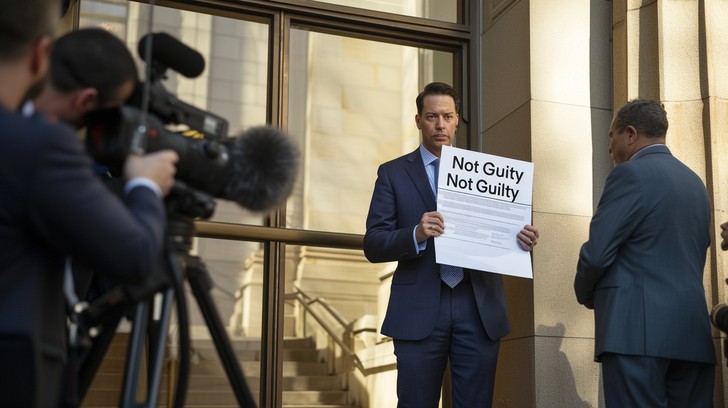Now Reading: Air and Space Law: International Overview
-
01
Air and Space Law: International Overview

Air and Space Law: International Overview
1. Introduction
The development of air as a medium of travel in the beginning of last century brought rewards along with difficulties. On one hand it advanced globalization, whilst on the other hand it also resulted in imperialist tendencies over the sovereignty of airspace which eventually ensued into the conflict of power. There were, primarily, three ideas to resolve such power struggle, viz, absolute sovereignty over its territory without any control on other country’s aircraft; absolute sovereignty but with the power of control to regulate other’s aircraft and; limited sovereignty only to the extent of lower strata of air space. Such conflict of ideas gave rise to the formation of organizations, bundle of treaties, conventions, and conferences to the make effective use of air and space while maintaining the international solidarity.
2. Historical Background
The first effort for codification of international air law took place in 1910 with the making of German balloons and its constant flights over French territory without permission. The incident gave rise to Paris conference of 1910 with some rules and regulations1, which in a period of time became foundation stone for the formation of first ever international convention i.e. Paris Convention of 1919, dealing with airspace. Consequently, several treaties and conventions were made, but were unable to solve the problem of space flight or the regulation of space exploration. Distinction between the usage of breathable air and space was still bone of contention. The conundrum thereto triggered when Mandl expressed that space law as something different and distinct from the law of air and special legislation is need of hour for judicious and effective use of space. Finally, in 1967 Outer Space Treaty was formulated concerning space law and space exploration exhaustively, abolishing the complete and exclusive sovereignty of airspace above its territory.
3. Air law: International scenario
Air law, in its current usage, refers to the set of principles and series of rules governing the use of airspace and its benefits for aviation, general public and different nations.5 A number of multilateral as well as bilateral treaties have been formulated for the effective and peaceful usage of airspace. The locomotion of first flight between London and Paris ensued the first-ever convention, Paris Convention of 1919, in the field of air space.6 Consequently, four distinct and cardinal conventions took place. These were Havana Convention, 1928; Warsaw Convention, 1929; Chicago Convention, 1944; and Montreal Convention, 1999. All these conventions progressed the idea of Aerial navigation.
In Paris convention, the exclusive and complete sovereignty over the air space above its territory was recognized. Along with other important principles, innocent passage to other country’s aircraft was the cardinal principal of the convention. It also focused on the issue of peace and prohibition of military use. Further in Havana Convention, the important issue regarding air traffic dealt with dexterity. Both the conventions lack the proper regulation of airspace after World War II, which resulted into the formulation of Chicago Convention which proved to be Magna Carta in the field of air law.
The peculiar features of Chicago convention includes, the need of consent of concerned state before schedule flight and power of ICAO council to settle disputes along with its binding nature. For the first time ‘Five freedoms of air’ were also declared under the convention.10 It was also declared that for state aircraft, special agreement and consent thereon is prerequisite for their locomotion. The International Civil Aviation Organization, considered to be the paramount organization concerning air law, was also established under the convention.
Another important aspect of airspace, apart from air navigation, is aircraft hijacking. Several treaties and conventions took place to contain the curb of hijacking, most important incudes, Tokyo Convention, 1963; Hague Convention, 1970; Montreal Convention, 1971; and Beijing Protocol, 2011.12 The Important principles being emerged from such treaties and conventions are principal of universal jurisdiction and principle of extradition. Former implies that, crime of hijacking is against the interest of international community and in order to conquer such a crime, all states can exercise jurisdiction. The Principle of extradition provided that the offence is deemed to be to be extraditable offence in common extradition treaty which will have effect of considering hijacking as not a political crime.
4. Space law: International scenario
The term space law, often, refers to rules, principles, and standards of international law enumerated in five international treaties along with five sets of principles under the auspices of the United Nations. It addresses issues which include, inter alia, safeguarding the space and earth environment; liability for damages caused by space objects; rescuing of astronauts, sharing information about the potential danger in the space; delimiting space warfare; freedom of use and exploration of space materials by every state indiscriminately; and resolution of any dispute arising out of space exploration.14
The treaties, commonly referred to as “five United Nation treaties on outer space”, are Outer space treaty, Rescue agreement, Liability convention, Registration convention, and Moon agreement… All these treaties emphasize the notion that all the space exploration activities and consequent benefits must take place with the common intention of enhancing man-kind, with an emphasis on promoting international solidarity.
With the increase in the development of space explorations by several countries, exploitation of the same is also increasing with stressing speed, the militarization of space, exploitation of natural resources, space debris are one of the several issues being faced in the recent times. The Outer Space treaty, being Magna Carta of all other treaties prohibits any discriminatory use of space resources by the Countries. But these provisions are interpreted by states according to their comfort and at their whims.
Some of the major points to the treaty include:
· No discrimination based on the country’s power when it comes to space exploration, meaning the claim of sovereignty on space exploration is not possible.
· Any nuclear or other mass destructing tests are not allowed in any celestial body by any state irrespective of country’s might.
· Vicarious liability on an individual state for any kind of damage occurred by the respective state’s space exploration mission.
5. Limitations of Air and Space law
Formulations of conventions, treaties, conferences and organizations have played significant role for the effective use of air and space while maintaining international harmony and solidarity. But it is also pertinent to note that all such measures are not bereft of limitation, which consequently resulted into maladministration of the regulations and exploitation of developed countries to developing countries. The major problem with such treaties and conventions is that they are non-binding in nature. Domestic legislations and international pressure by other countries become pertinent in order to efficacious use of such treaties and conventions. Notably, behemoth of space exploration, viz, China, India, and Russia do not have robust mechanism of domestic air and space laws. Condemnation of states for disregard to the principles declared in treaties seem to be more the consequence of convenience and diplomacy, rather than an obligation.
Apart from this, when it comes to space law, the biggest challenge seems the militarization of space and the same is flourishing with exponential rate even with the presence of dozen of treaties, conventions and conferences.18 Another major concern is with respect to space debris. Under Convention on International Liability for Damage Caused by Space Objects 1972, compensation is needed to be paid for any kind of destruction caused due to country’s space debris but the convention did not explain the quantum of compensation to be paid. It has consequent result of taking decision regarding quantum of compensation at the whim and impulse of victim countries resulting into injustice to the countries at fault. Conflict between India and Japan is the living example of injustice due to the loopholes engrafted in respective treaties and conventions.
Air law is also no less than space law when it comes about limitations. No treaty or convention concerning air law has been dealt with the rules and regulations at the time of war. Paris convention along with others as well only enumerated rules for peace time. Further, despite the efforts being taken by international organizations to curb the problem of hijacking, the cases are still increasing with ascending rate. The presupposition of the states that prosecution or criminal sanctions will prove to be an effective measure for preventing hijacking seems to be fallacious and dubious.
6. Conclusion
In time gone by, military dominance of the country was seen as international supremacy and more bargaining power but with the changing times, technological advancement has become a key player to ascertain the country’s hegemony. Unmistakably, subjugation of behemoth countries like the USA, China, Russia, and Japan has been a result of their technological advancement in air as well as space. But it is also very pertinent to note that such technological feats must take place with the intention of advancement of human race while maintaining world peace and international solidarity, rather than the promotion of air and space warfare. To achieve such goals, more attention must be contributed to the goal of diminishing the existing loopholes of the treaties and conventions along with each country’s efforts to implement effective domestic air and space legislations.
Author: Shama Jha Legal Intern at Legal Desire (June 2020)
Shama is pursuing BA LLB from University School of Law and Legal Studies (GGSIPU). A law student in 2nd year, ambitious, inquisitive and consistently curious. I am passionate about changing dimensions of law and its impact on international human rights.








